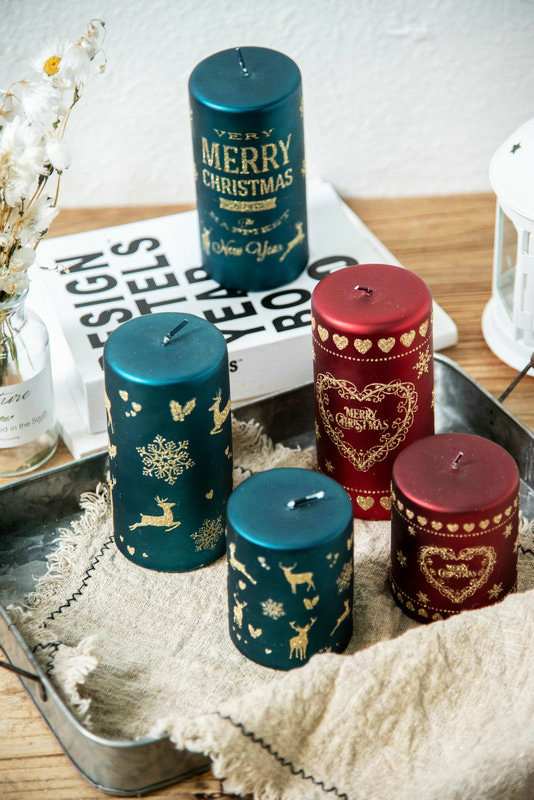Color flame candle making technology
1. The raw materials and requirements of the main fuel […]
1. The raw materials and requirements of the main fuel
The main fuel is the flame that is emitted when it burns to promote the coloring agent to produce various colors. Requirements for the main fuel agent: 1: 35%-65% carbon content. 2. The melting point is above 38 degrees Celsius and below 150 degrees Celsius. If it is too low, the shape retention will be poor, and if it is too high, the manufacturing and processing will be inconvenient. 3. No toxic gas is produced during combustion. 4. The burning flame is as close as possible to colorless, so that the color of the color agent can be fully displayed.
According to the above requirements, the raw materials of color flame candles can be selected from urethane, methyl oxalate (ie methyl oxalate) and symmetric trioxane (ie trioxane). Among them, Anji ethyl methylate has the best effect.
2. Processing of burning candle wick
The burning candle wick of the color flame candle can use cotton yarn twisted wire or twisted wire as the raw material. When these core wires burn, they will emit orange-yellow flames. Therefore, the candle wick needs to be added with a catalyst that can promote combustion. For example, one or a mixture of platinum, palladium or their compounds is carried on a carrier such as particulate alumina, acid clay, silica gel, etc., and then they are adsorbed on the candle wick as a catalyst to promote combustion. Aqueous solutions of metal salts such as platinum, palladium, vanadium, etc., halides, etc. can also be used to treat the burning candle wick so that it adheres to the top and serves as an oxidation acceleration catalyst. The adsorption capacity of these mixtures varies from 1 ppm to 100 ppm. In addition, the plant ash formed by burning various plants, fiber paper, charcoal or tobacco can also be used as a catalyst for accelerating combustion, and it is effective when the adsorption amount reaches 0.01% -0.1%.
3, the processing of the color candle wick
The color candle wick is a combustible thread of cotton fiber, natural regenerated fiber or synthetic fiber with a diameter of 0.01-1 mm, and is impregnated with a metal compound. According to the required color, the metal compound can be selected from the salts of cobalt, chromium, copper, gallium, sodium, lithium, manganese, calcium, barium, strontium, cesium, rubidium, tin and other metals, and their lower carboxylates such as acetate , Hydroxides, nitrates, carbonates, higher fatty acid salts such as stearates.
Dip coating method: first dissolve or disperse the metal compound and the adhesive in an organic solvent, and then immerse the combustible thread in this solution, or apply the solution on the above thread. It is also possible to allow this solution to adhere to the above-mentioned thread in a molten state. When embedding the color candle wick in the main burning agent, in order to prevent the metal compound from spreading to the main burning agent, the surface of the wire is covered with a layer of resin. As the binder and resin used, polyvinyl ether glycol can be used as the resin used after being dissolved in an organic solvent. Cellulose derivatives such as nitrocellulose, polyethylene or other copolymers can also be used.
Since the color candle wick is independent of the lower part of the burning candle wick, the oxidation acceleration effect of the burning candle wick cannot reach the color development part. Therefore, the color candle wick must also add the above oxidation acceleration catalyst 1-100ppm to accelerate the color development. Part of the burning makes the color more vivid.
There are several methods for burying the hair color candle wick and the burning candle wick: (1) Align the hair color candle wick and the burning candle wick, approach them in parallel, and bury them in the main fuel agent (see Figure 2); (2) Wrap the hair color candle wick on the burning candle wick for one or several times before burying it, but the winding direction should be opposite to the twisting direction of the burning candle wick; (3) Match a burning candle wick with several of the same or different species Hair color candle wick. At this time, the hair color candle wick should not be buried in the periphery of the candle, and the burning candle wick and the hair color candle wick must be partly in contact or close to each other and independent of each other. The top of the color candle wick is just enough to reach the flame of the burning candle wick. quasi.


 ENG
ENG  España
España русский
русский